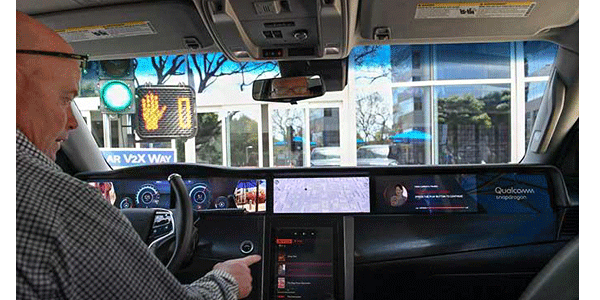A battle between WiFi and 5G in the car is now in full swing, reported the Wall Street Journal recently. Toyota and General Motors support a WiFi standard for cars talking to each other and Ford and BMW support 5G.
So what’s the difference? 5G is about 10 times faster than current broadband. An example of that when it comes to cars communicating with each other is that with WiFi, you get a warning alert if a vehicle a couple of cars ahead stops short. But under 5G, you can SEE the video feed of cars and trucks ahead of you (and by a greater distance ahead). 5G is also faster so the data is more immediate.
The problem is that the government has already invested “hundreds of millions of dollars” in a swath of WiFi dedicated for cars called DSRC and GM and Toyota have already made large investments in it.
GM and Toyota are asking the Trump administration to support a 2016 plan to mandate DSRC in new cars starting in 2021. But Ford, BMW and others are lobbying the Trump administration to make 5G the new standard because it offers better capability, said the WSJ.
Car makers are now in a “showdown” over which technology should be the future standard for vehicle-to-vehicle (V2V) or vehicle-to-anything (V2X) communications (V2X includes vehicle communication with traffic lights and other roadway infrastructure).
Aftermarket suppliers, who could produce V2X consumer devices for retrofitting older cars, are left sitting on sidelines, wondering which format will win out.
GM already offers DSRC-ready cars and Toyota recently announced it will offer DSRC V2V in most US cars by the mid 2020s. Together, the two car companies make up about a third of car sales in the US. They see DSRC as a bridge technology to 5G which could take years to fully deploy.
5G supporters are rallying around C-V2X (cellular vehicle-to-everything communication). It provides an easy upgrade path to 5G when it becomes available. Under DSRC, there’s no apparent way to upgrade the system to 5G. Also, DSRC would require the building of tens of thousands of roadside units (RSUs) attached to the roadways.
C-V2X can “see” over a quarter of a mile down the road with a line of sight view while standard V2X has less than 1/8th mile visibility. (For non- line of sight, the figures are 350 feet for C-V2X and 200 feet for DSRC), according to a recent 5G Americas’ White Paper.
The first 5G smartphones are expected to debut next year.
Source: The Wall Street Journal (subscription may be required)
Photo: Qualcomm









